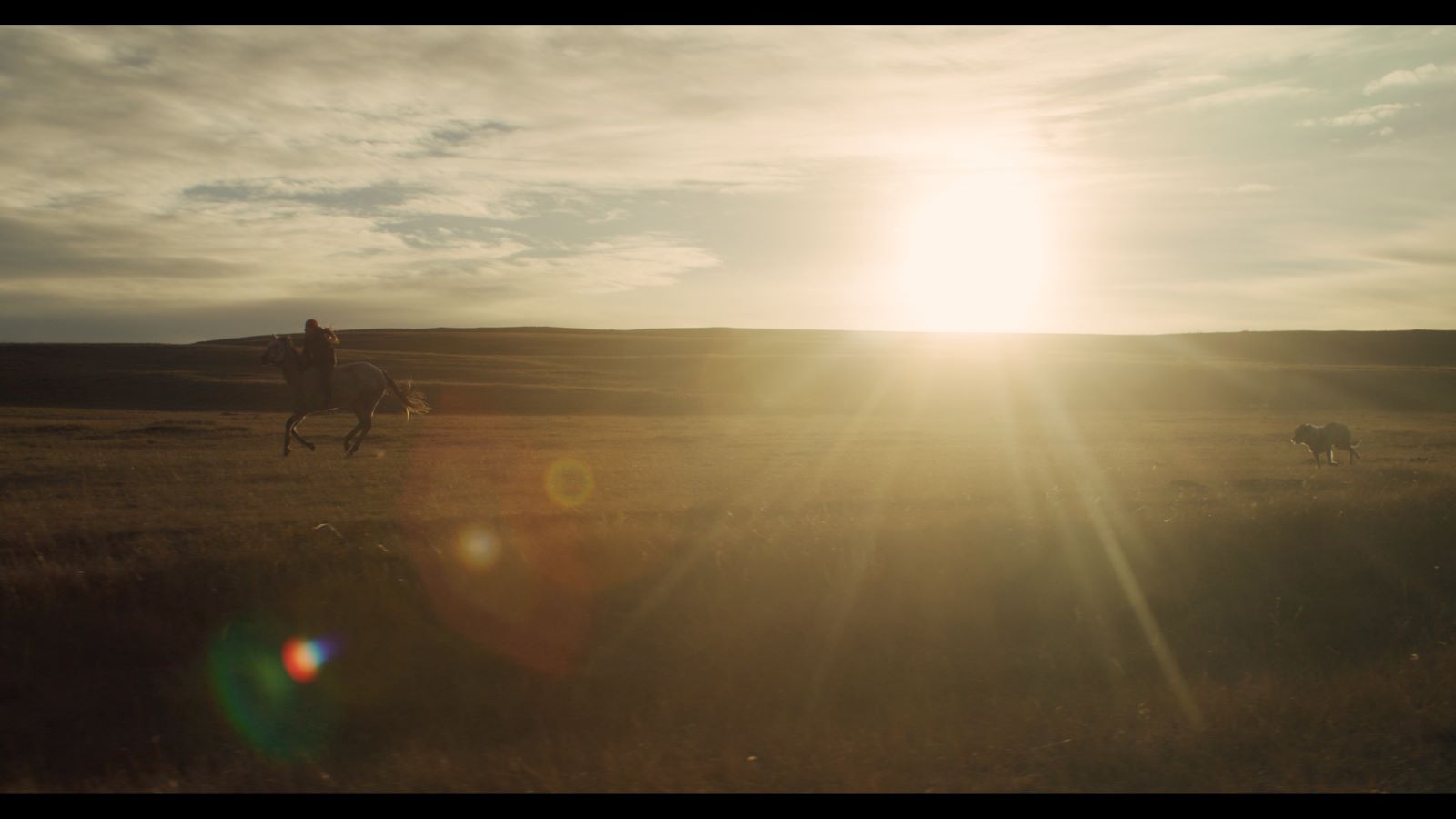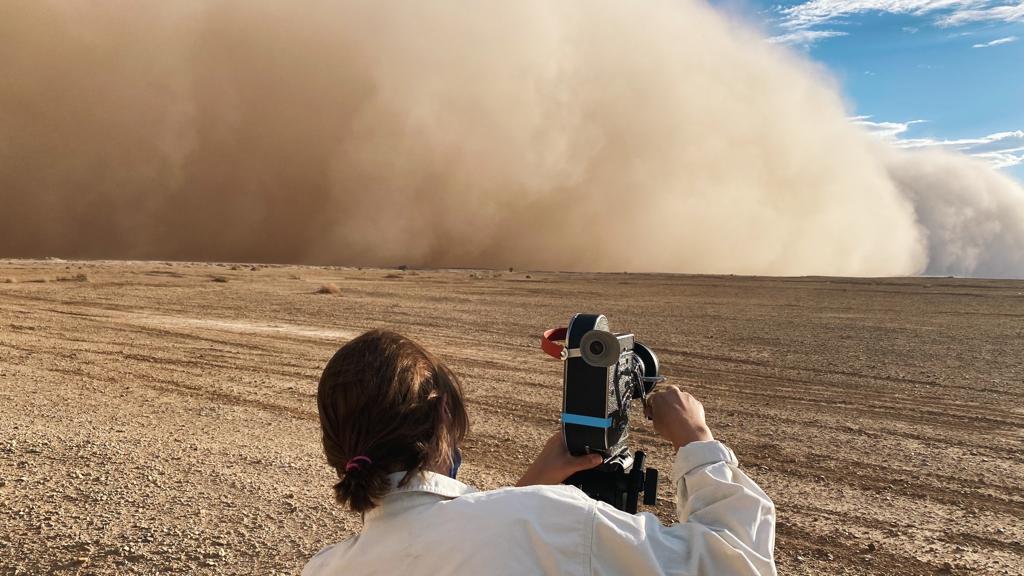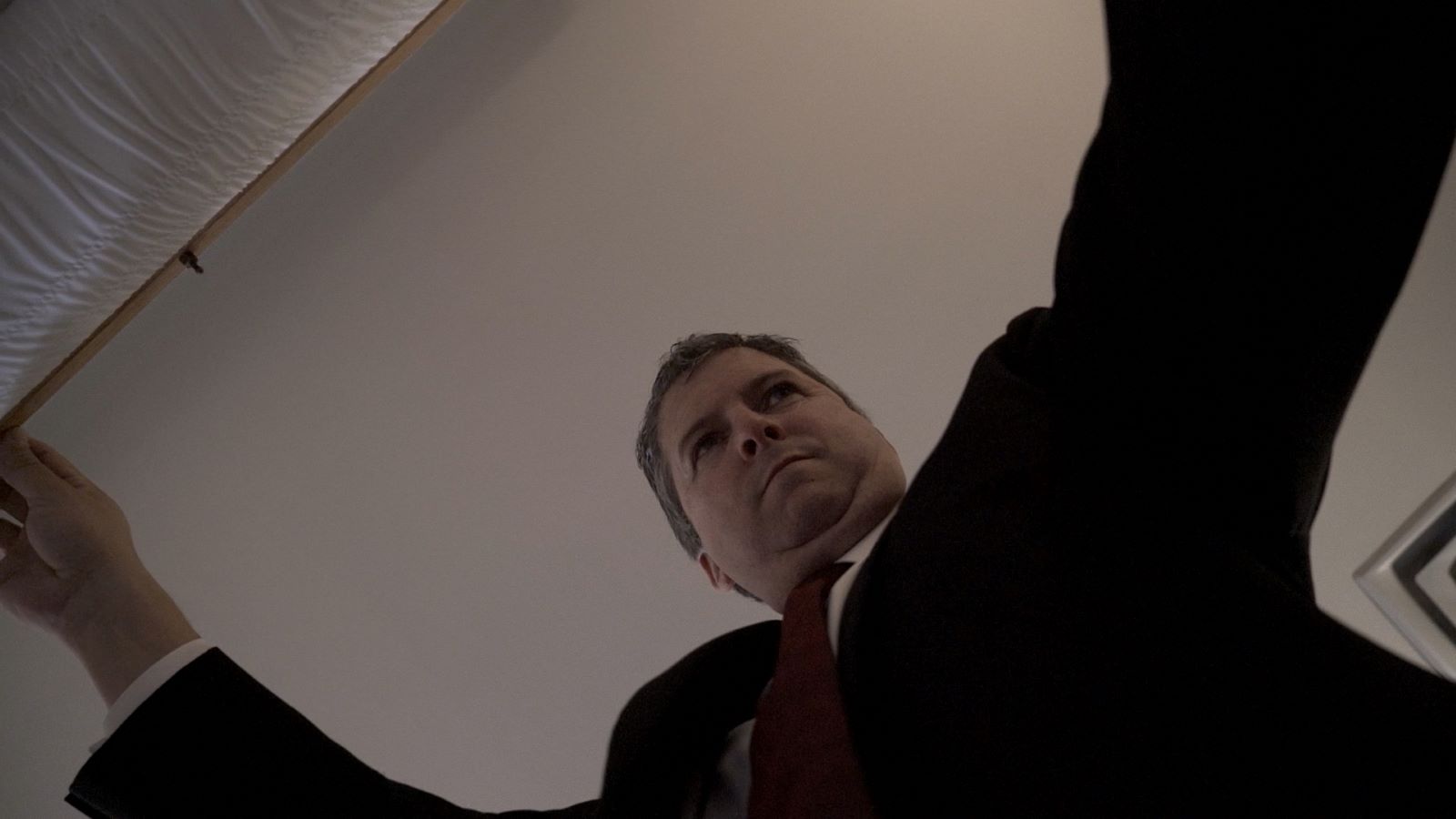For the Alberta-based Siksika Nation, the horse has always loomed large as both a utilitarian animal and a spiritual being, one as much in tune with the landscape as with domestic life. “Horses have always been something that were around for me, growing up on a ranch,” says Logan Red Crow, the teenage protagonist in director/writer Banchi Hanuse’s (Nuxalk Radio) new documentary, Aitamaako’tamisskapi Natosi: Before the Sun, in a phone conversation with POV. “And for the Siksika people, that was just our way of life with the horses. That’s how we got by; that’s how we travelled; that’s how we used to hunt. We used the horses to do stuff in our daily lives.”
In Before the Sun, Logan not only cares for the horses on the family ranch, she trains them for competition in Indian Relay Races. It’s a rigorous sport that entails riding multiple horses around a track at high speeds, and changing them after each lap, without skipping a beat. Between races, Logan forms an emotional bond with the horses; she’s meticulous in washing and feeding these special animals, while maintaining an ongoing dialogue with them, as if they were elders, confidantes and healers. “The horses are my home,” she says in the film. “They’re there for me more than people are.”
“During the time of the film, I was going through a lot of stuff emotionally,” Logan recalls. “I was in an abusive relationship, and being with the horses helped me get through that.”
Cinematographers Ben Giesbrecht and Luke Connor strike a compelling balance between the majestic grandeur of the Blackfoot Territory in Alberta and the intimate nobility and wisdom of the horses on the Red Crow ranch. They’re centred as protagonists on equal billing with the Red Crow family.
The horses seem to evince an understanding of what Logan and her brothers share with them, as the film team frames them in tight portraits and locks in on their eyes.

“One of the goals of this film was to really show the connection between Logan, her family and their horses,” Hanuse explains, in a phone interview. “We tried to get into the world of the horses and what they are experiencing…[as well in] this film.
“One thing that was challenging is that we were dealing with a lot of different horses,” Hanuse continues. “We really tried to focus on the main ones that she raced with and the ones…she has special relationships with, although she does have a shared relationship with all of them. But we had to narrow it down, so the audience could get to know a few of them.”
The equine spirit courses through the Red Crow DNA: their Indian Relay racing team, Old Sun, is named for a 19th century Blackfoot Chief. Logan’s late grandmother had earned renown as a horsewoman and reigns as a guiding light, inspiration and de facto matriarch, especially for Logan and her father, Allison Red Crow. “Native women are not given enough recognition for their accomplishments,” he notes in the film. The father-daughter bond is cemented in large part by a mutual devotion to their relative and drive to honour her legacy, and the spirit and resolve of their ancestors. As Logan says in the film, “When they tried to break us, they made us stronger. And my grandma was the strength that helped me get up.”
“What I’ve been learning is that back in the day, women would have–I wouldn’t say authority, but they just did a lot,” Logan maintains.
“Honestly, that’s what drew me to Logan’s story: her relationship with her grandparents,” Hanuse says. “I connected with that personally because I grew up with my grandparents and I really saw how much her grandparents, on both sides, meant to her. Her grandmother’s passing was something that was very important to the story because she was the woman who got them the first batch of horses. She was a horsewoman and was in the parade at the Calgary Stampede. She was also an artisan, and that’s something that Logan took up after her grandmother passed away, learning to make her own uniforms.”
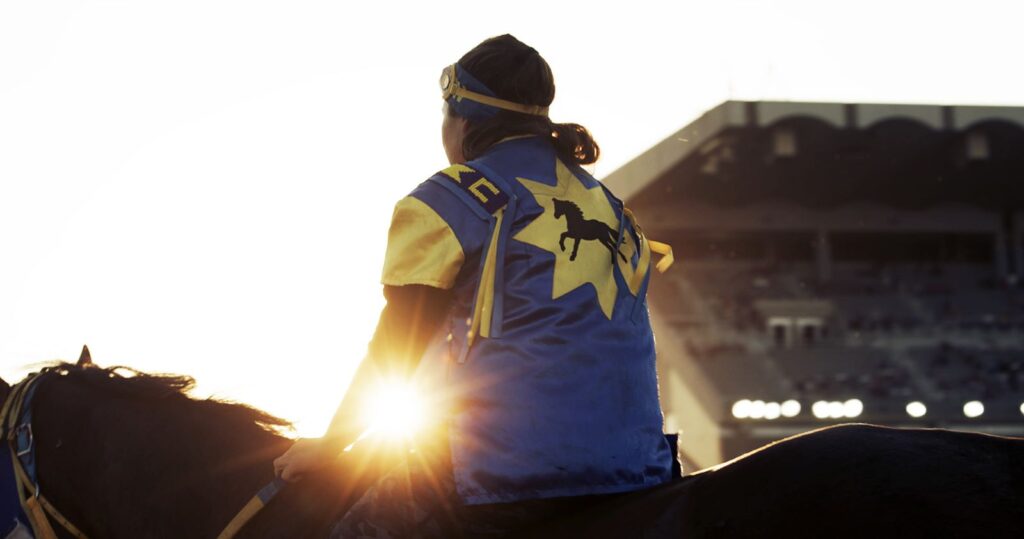
“When the project came to me,” Hanuse continues, “it had started out as a TV series about a number of girls who raced horses. I wanted to make it into a documentary. And they brought me, on paper, a bunch of different girls, so I could narrow it down to a few of them. But Logan’s story really stood out to me. This had to be the film; this story was incredibly compelling to me.”
With the three races in which Logan competes, the Before the Sun team were gifted with a riveting narrative. Each race had a teachable moment and an empowering one, especially because there were few opportunities where women could compete. “I’m better than the past version of me,” Logan reflects in her voiceover, after her final race in the film.
On balancing voiceover and on-camera interviews, Hanuse shares, “I just wanted people to really feel like they were there. With the family. I felt the best way to do that would be as much cinema vérité as possible. I sat down with all of the Red Crow family to do audio interviews, and then I would do on-camera interviews with them.”
One might be tempted to label Before the Sun a sports documentary, and indeed, it has the built-in drama that underscores the best of the genre. Logan herself embodies the verve, perseverance and dedication that the genre seeks out in a protagonist. She gets up, as the title says, before the sun, and as her father says, “is hooked on winning.” She heeds her mother’s credo: “Be independent, be strong, be respectful.”
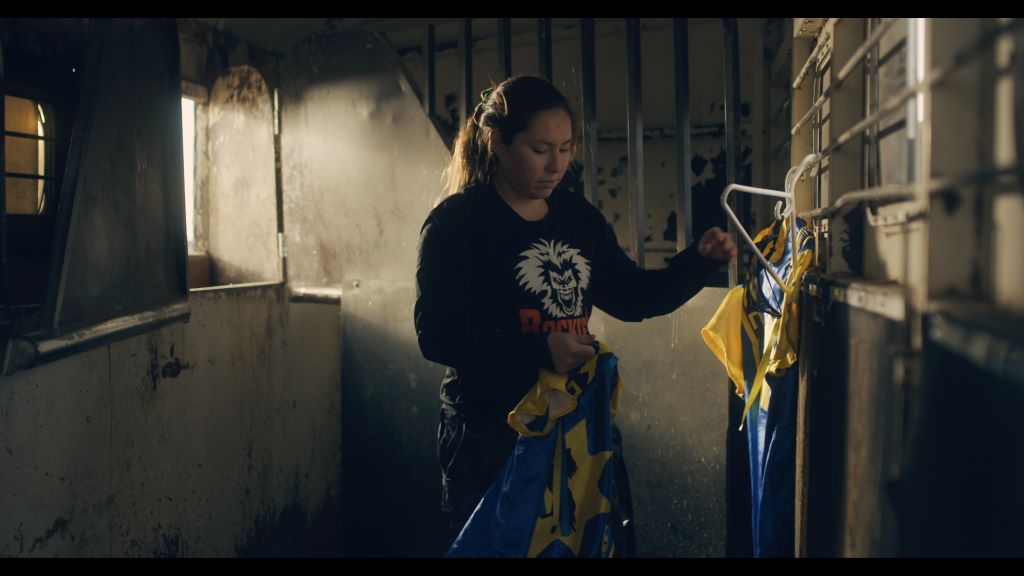
Logan and her family have had a couple of opportunities to see Before the Sun–the first, in Siksika Territory, and then in Missoula, Montana, for the world premiere at Big Sky Documentary Film Festival in February.
“I was pretty happy with the outcome and everything that they got,” Logan reflects. ”The only thing is, I feel like that was my first time really racing for a full year; sometimes [before then] I’d just race in the fall or one or two relays a year. Every time I watch the film, I always see areas where I could be better. I always look at it like, ‘It’s me versus me.’”
As of now, in addition to maintaining the family ranch, Allison works for the Calgary Stampede, the site of Logan’s first race in the film, and is lobbying for a greater presence of women among the featured races. Logan is in college–Old Sun College, named after her ancestor, which was formerly a notorious residential school.
Not surprisingly, Logan is studying to be a veterinarian. And she has cut back on her racing to the summer months. “I try to put school at the very top of my priority list, and then the horses,” she says. “I do find that I race a lot and I go everywhere. My horses are still tired from last season. So right now I feel like I’m okay with missing out on the spring season.”
And as for her aspirations beyond racing, “ I want to make sure my horses are always feeling good, feeling 100%. And that further knowledge or education is to learn about their anatomy, their musculatory system. You can always be better. I want to feel like they’re always running their best. You always want them to be their best.”




